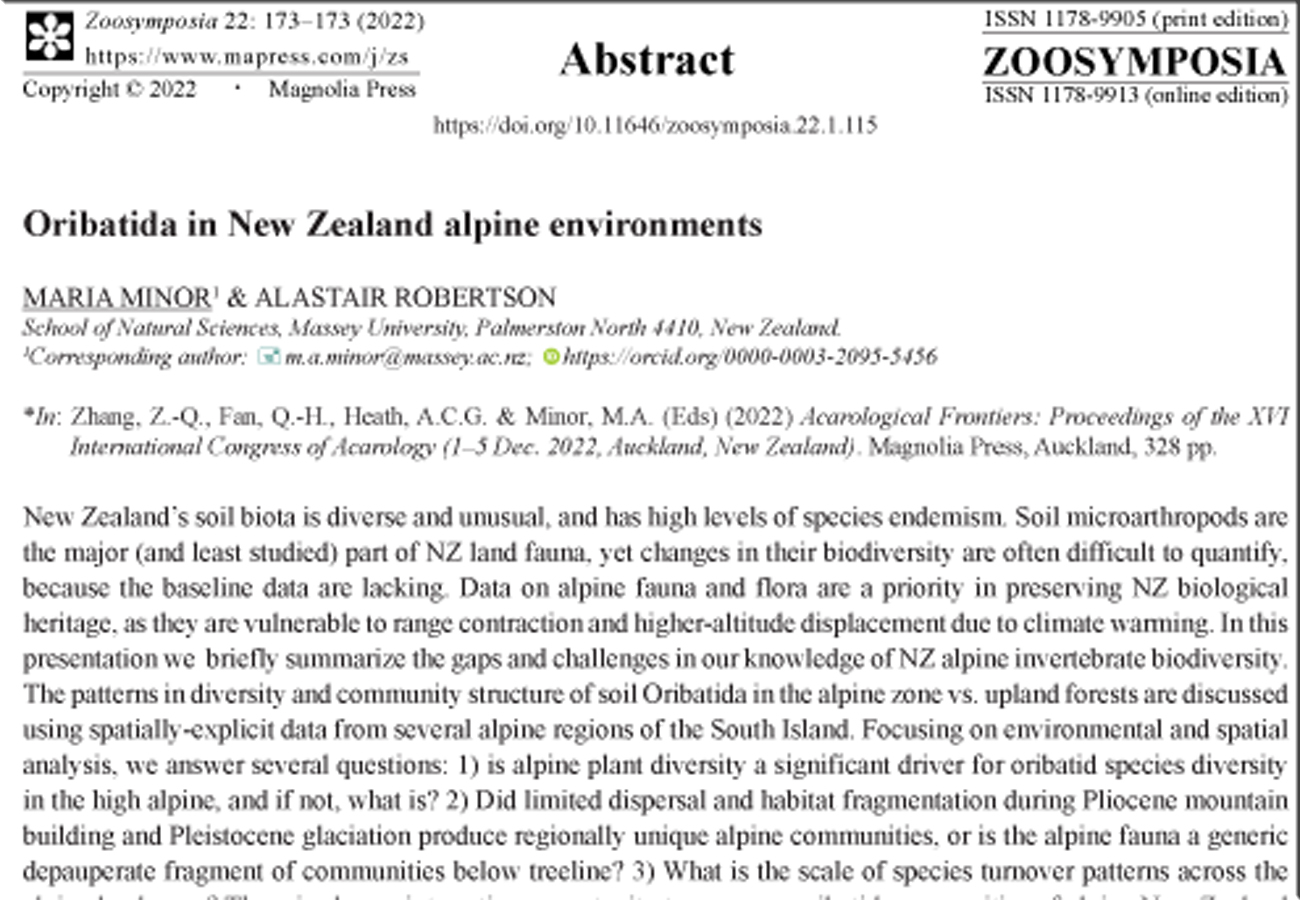Abstract
New Zealand’s soil biota is diverse and unusual, and has high levels of species endemism. Soil microarthropods are the major (and least studied) part of NZ land fauna, yet changes in their biodiversity are often difficult to quantify, because the baseline data are lacking. Data on alpine fauna and flora are a priority in preserving NZ biological heritage, as they are vulnerable to range contraction and higher-altitude displacement due to climate warming. In this presentation we briefly summarize the gaps and challenges in our knowledge of NZ alpine invertebrate biodiversity. The patterns in diversity and community structure of soil Oribatida in the alpine zone vs. upland forests are discussed using spatially-explicit data from several alpine regions of the South Island. Focusing on environmental and spatial analysis, we answer several questions: 1) is alpine plant diversity a significant driver for oribatid species diversity in the high alpine, and if not, what is? 2) Did limited dispersal and habitat fragmentation during Pliocene mountain building and Pleistocene glaciation produce regionally unique alpine communities, or is the alpine fauna a generic depauperate fragment of communities below treeline? 3) What is the scale of species turnover patterns across the alpine landscape? There is also an interesting opportunity to compare oribatid communities of alpine New Zealand with those bearing similar ecophysiological challenges in the Northern Hemisphere.
References
-


